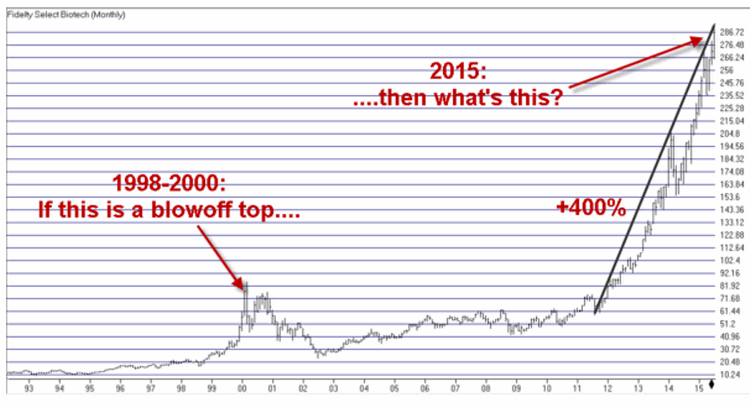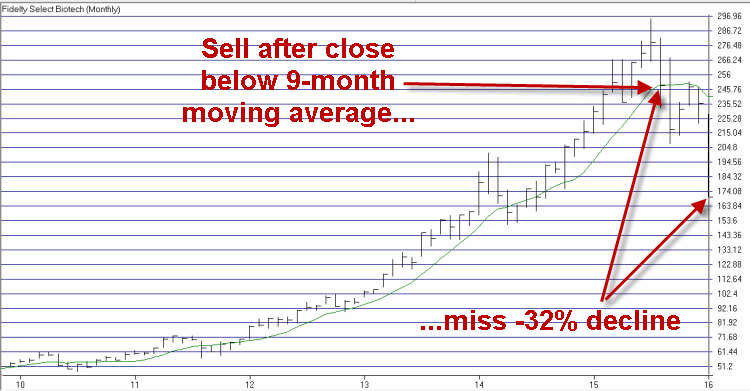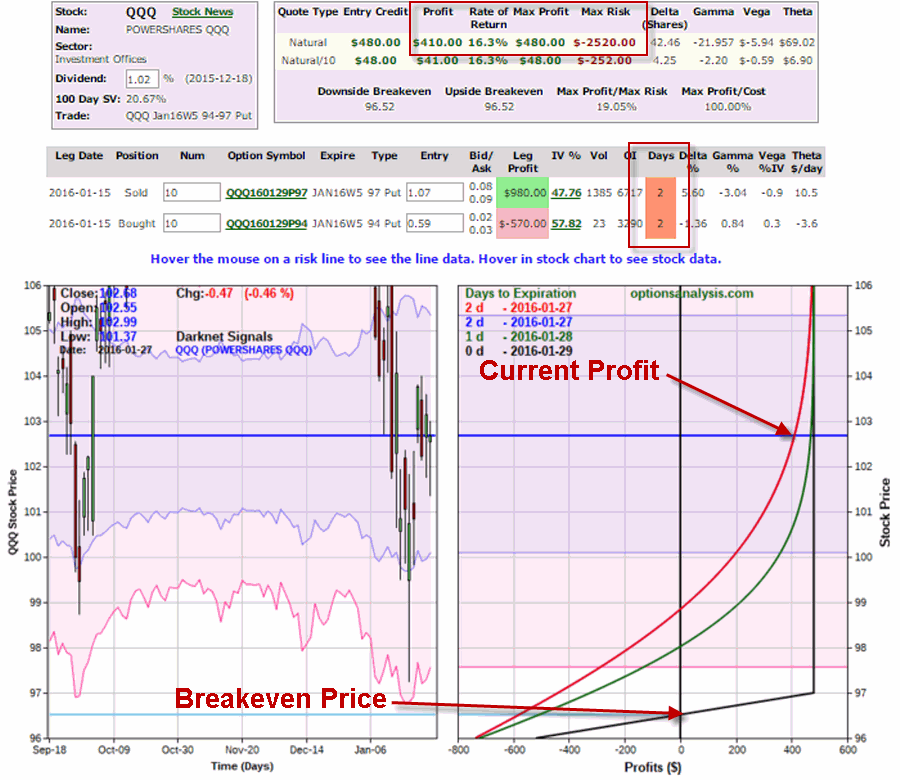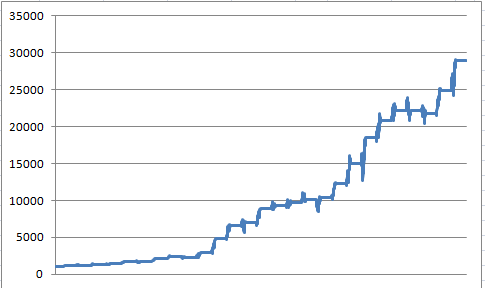I am not sure I know the answer to the question posed in the headline. But I do know one thing – biotech stocks are getting killed. If only somebody had warned us that something like this might happen…..Oh, wait, somebody did.
In case you were not aware, biotech stocks (using Fidelity Select Biotech, ticker FBIOX as a proxy) are now 43% off of the high made on July 17th, 2015. On July 17, 2015 I posted an article that included the ominous chart that appears in Figure 1.
 Figure 1 – Chart from July 17, 2015 article
Figure 1 – Chart from July 17, 2015 article
Now here’s the interesting paradox. Technically I could argue that I did in fact “call the top”. But if you reread that article you will note that I never actually said “Sell.” It pains me to say it but the fact that FBIOX topped on the very day I wrote the above article is coincidence not prescience. The point of that article was not to “call the top” but simply to warn that danger appeared to be imminent. Imminent indeed.
The other point is that if you are in this business long enough (for example, from say the “Hair Era” in your life to the “Not So Much Hair Era”, but I digress) you will see that various patterns repeat, um, repeatedly (See here and here). If you are paying attention and not afraid to act you can actually do yourself some good (regardless of whether the S&P 500 is rising or falling).
The Difference Between Theory and Reality
There is an important distinction to be made between “theory” and “reality” when it comes to investing and trading. In theory, picking a top sounds like a great idea. In reality, attempting to “call the top” is typically foolish. However, in reality, recognizing danger when it exists is one of the most valuable skills you can develop.
So speaking of reality, consider this example. The chart that appears in Figure 1 provides a warning of danger. Now just suppose you applied something as simple, basic and mundane as a 9-month moving average to FBIOX and decided to sell if and when price drops below said moving average. As you can see in Figure 2, you might have sold FBIOX at the end of August 2015 and avoided a further -32% decline in price from that point. Figure 2 – FBIOX with a 9-month moving average (Courtesy AIQ TradingExpert)
Figure 2 – FBIOX with a 9-month moving average (Courtesy AIQ TradingExpert)
The bottom line: It really doesn’t have to be rocket science.
Jay Kaeppel



























